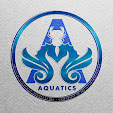Substrate
When it comes to the substrate, it is the underlying substance or layer. This can be soil, sand or gravel base substrate. For some hardscapes, it requires only sand (sand particles should not be very fine, because very fine sand can cause dusty nature. 1mm-2mm size pebble like sand is the most suitable. Ex; La plata sand) or gravel as substrate. But for a planted tank, it requires a special substrate known as substrate system. From bottom to top it has,
- Base later fertilizing substrate
- General plant substrate (soil)
- Inert substrate (sand, gravel or pebbles)
Main roles of substrate in a planted aquarium;
- Filtration
- Providing nutrients to the plants.
- Providing chemical balance by maintaining/reducing pH and GH (general hardness)
Role of each layer of the substrate system
1. The base later fertilizing substrate
This is a high nutrient contain substrate and available in different sizes. Normally use as a layer about 1 cm thick. This should not use directly as a substrate and always this later must be covered with general plant substrate soil.- Provide high nutrient content
- Porous nature helps aeration.
- Hold millions of bacteria that helps for the nitrogen cycle.
 |
| Figure 2: Base layer substrate. |
2. General plant substrate (soil, clay based)
This can use as the only later of substrate in a planted tank without base later fertilizing substrate. Using this it can create landscape by creating different heights. Minimum this has to lay at least 4 cm in thickness. Available as a powder type and pellet type under different brand names in the market.
The particular nature of this substrate increases the interspace in between soil particles that increase the oxygen level in it, so plant roots will be able to breath.
- Provide base substrate for plants.
- Minimize the diffusion of nutrients from base later fertilizing substrate.
- Create porous nature that increase aeration in between soil grains.
- Provide some fertilizer for plant growth.
 |
Figure 3: A hardscape with seiryu stones and general planting soil. |
3. Inert substrate (sand/gravel)
Mainly use for decoration and add a natural look to the Aquarium. Light color substrate will increase the color of the fish. Small particular sand is dustier and it is not suitable for planted tanks. It is better to use coarse kind of sand.
 |
| Figure 4: Sandy substrate in a planted tank. |
Rocks
Rocks are one of the main components in the hardscape. In a hardscape, rocks are used to add a natural look to the scape, to hold some plants like mosses and ferns which do not requires a substrate like planting soil. Using rocks, it can add a depth to the scape and rocks provide niches for fish or shrimps sometimes. In the natural environment, it can be found same kind of rocks in one place, so to induce natural look of the aquascape, it must be used a single kind of rocks for the layout. When selecting suitable rocks for aquascape, it has to be strong, not like soft sandy stones. Another thing is, it should not release toxic materials to the water where fish or plants can be affected. By avoiding the rocks with sharp edges, it can reduce the risk of fish being injured.
There are many kinds of rocks which are used in aqua scaping. Seiryu stones, lava rocks, dragon stones, pagoda Stones, samurai stones, desert stones, mountain stones, hakkai stones, wolf stones, manten stones and petrified woods is used as hardscaping stones.
If you are using high dense and expensive type of stone, u can fill, light weight and cheap stones like lava rocks, petrified woods under the substrate, which can reduce the use of stone and planting soil.
 |
| Figure 05: Seiryu stones |
 |
Figure 06: Small size black lava rocks (They have a low density due to their porous nature) |
 |
| Figure 7: A dragon stone |
 |
| Figure 8: Dark pagoda stones |
 |
| Figure 9: Hakkai stones |
 |
| Figure 10: Manten stones |
 |
| Figure 11: A hardscape made up of Petrified wood |
 |
Figure 12: Samurai stonesDriftwoodDriftwood also use to create a natural looking environment and this gives a additional beauty as well as provide substrate for plants like mosses, ferns, Anubias spp., Bucepalendra spp. |
“This article is mainly to send the massage of creating a more natural aquariums using all-natural materials like sand (planting soil is a man-made material, but it contains a natural soil and a rubber coat around it.), rocks, driftwoods and aquatic plants, rather than ordinary aquariums that we can see mostly in the country, because although the art of nature aquarium is famous in Europe, North and South America and Eastern Asia, this is new to our country. The information in this article is mainly based on the Green aqua videos and my personal experiences.”
(Written by, Madhawa Pramod Manukularathne)
To be continued with 3rd article based on important accessories for your aquarium.
References
· https://buceplant.com/collections/aquascaping-rocks
· https://www.youtube.com/watch?v=_yg090qE_W8














0 comments:
Post a Comment